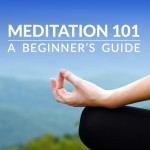Updated February 22, 2014.
Although meditation is much more mainstream nowadays, widely used by millions of people all over the world, there are still misconceptions about it. Here are the top ten myths about meditation, debunked by Buddhist teacher Bodhipaksa for wildmind.org.
Common Meditation Myths
Myth #10 : Meditation is Relaxation
While it’s important to let go of unnecessary effort while meditating, meditation is still a practice — that is, it involves effort. Sure, we start by letting go of tensions in the body, but that’s only the start.
Myth #9 : Meditation is Just Self-Hypnosis
There’s actually some overlap between hypnosis and meditation (although some meditation teachers, would deny this). In both disciplines we start with inducing a state of relaxation and then proceed to doing some kind of inner work. In hypnosis and in some forms of meditation that inner work involves visualization or the use of repeated phrases. But many forms of meditation (for example, Zen “just sitting” or Theravadin mindfulness meditation) make no use of such tools. The overlap between hypnosis and meditation is only partial.
Myth #8 : There are Technological Short-Cuts
The web is full of products that promise you that you’ll meditate like a Zen monk at the touch of a button. Just stick your headphones on and hit play, and let the magical audio technology do the rest! But like myth #10, this overlooks the fact that meditation involves effort. Sure, if you stop running around being stressed for half an hour and listen to some blandly pleasant music you’ll find you’re more relaxed. Why wouldn’t you be? But it’s a mistake to confuse this with real meditation.
Myth #7 : Transcendental Meditation is the Most Common Kind of Meditation
Just about everyone has heard of Transcendental Meditation because of famous practitioners like the Beatles and because of controversies about TM being taught in U.S. schools, but TM is very much a minority pursuit — probably because it’s so darned expensive to learn. The most common form of meditation in the West is Mindfulness or Insight meditation, which comes from Theradavin Buddhism of South and Southeast Asia. Zen and Tibetan meditation (which often involves visualization) isn’t far behind.
Myth #6 : You Have to Sit in Lotus Position
In the West we sit in chairs from an early age and have stiffer hips. It’s therefore a rare Westerner who can sit in the lotus position to meditate — at least with any degree of comfort. In actual fact it’s possible to sit comfortably to meditate on a chair, a stool, kneeling, or even lying down (although you’ll have trouble staying awake). The most important thing is that you find a posture that’s comfortable for you — and that you don’t beat yourself up about not being able to twist your legs like a pretzel.
Myth #5 : In Meditation, You Sit There Saying “Om”
Mantra meditation is only one kind of meditation, and “OM” is only one mantra (or part of a mantra).
Myth #4 : Meditation is a Religious Activity
Although meditation comes from various spiritual or religious traditions, it’s not in itself necessarily a religious practice. The most common forms of meditation practice, for example, involve observing the sensations of the breath. What’s religious about that? Sure, there are some forms of meditation that involve using religious words of phrases as objects of concentration (e.g. Transcendental Meditation, Buddhist Mantra meditation, etc.) but many of the most common meditation practices have no religious overtones — which is probably one of the reasons they’re so common.
Myth #3 : Meditation is Somehow “Eastern”
A lot of people (usually Christians) have told me that they think Buddhist practice is “foreign” because it comes from an Eastern context. Hmm, where does Christianity come from again? Oh yes, the Middle East. But as with Myth #4 (“Meditation is a religious activity”) there’s nothing inherently Eastern, Southern, or Northern about counting your breath.
Myth #2 : Meditation is Escapist
To some people, meditation is “running away from problems,” “navel gazing,” “lotus eating,” or “disregarding the world.” Actually, running around being busy and never having time to experience yourself deeply is escapism. When you meditate you’re brought face-to-face in a very direct way with your own anger, delusion, craving, pain, and selfishness. There’s nothing to do in meditation but to experience and work with these things.
Myth #1 : Meditation is About Letting Your Mind Go Blank
Here it is, the all-time number one meditation myth — that meditation is about “making your mind go blank.” Sure, we aim to reduce the amount of thinking that goes on. But what would it be like to have a blank mind? Would you even be awake? Would you have any consciousness at all? Would you be able to know that your mind was blank? The confusion arises because we identify so much with our verbal thoughts (our inner self-talk) that we think that that’s all our experience is. And if we reduce or even stop our thinking (and that can happen) we assume that the mind must be blank. But a blank mind simply isn’t possible.
No, in meditation we aim to develop mindfulness — that’s mind-full-ness. When we’re mindful the mind is very much not blank. Rather, we’re aware of physical sensations, emotions, thoughts — and of how all those things interact with each other. The mind is so full of our present-moment experience that there’s less room for it to be full of useless thoughts, and instead we’re aware of the incredible richness of our experience — a richness that we overlook entirely when we spend our whole lives lost in thinking.
Read the full article, about the top 10 meditation myths here.
Many people misunderstand why we meditate. Because of these common meditation myths, we can miss out on the benefits of meditation, and how it helps us live a more conscious life.



